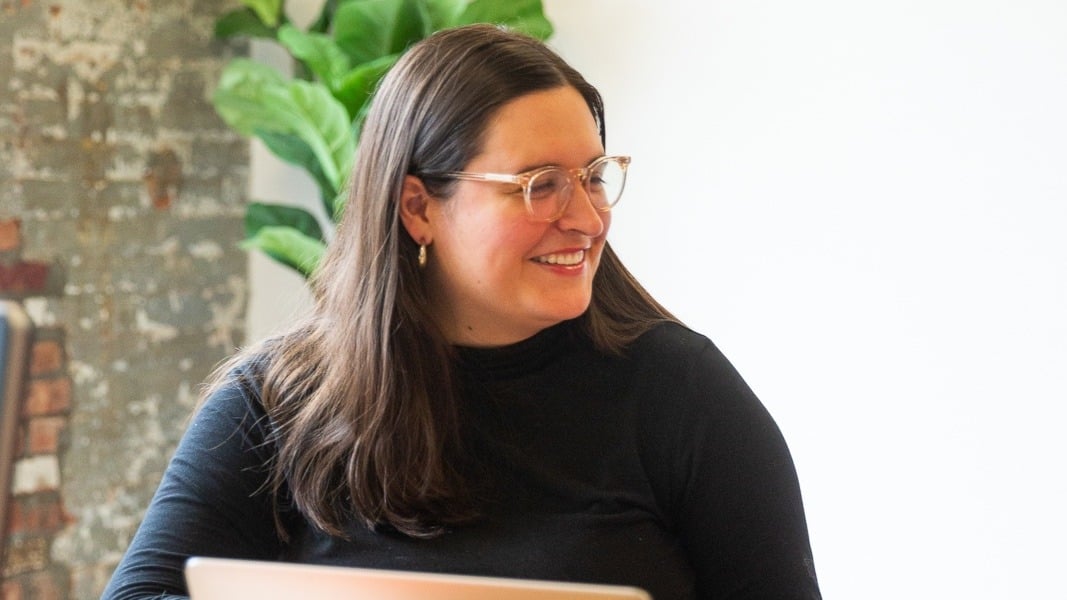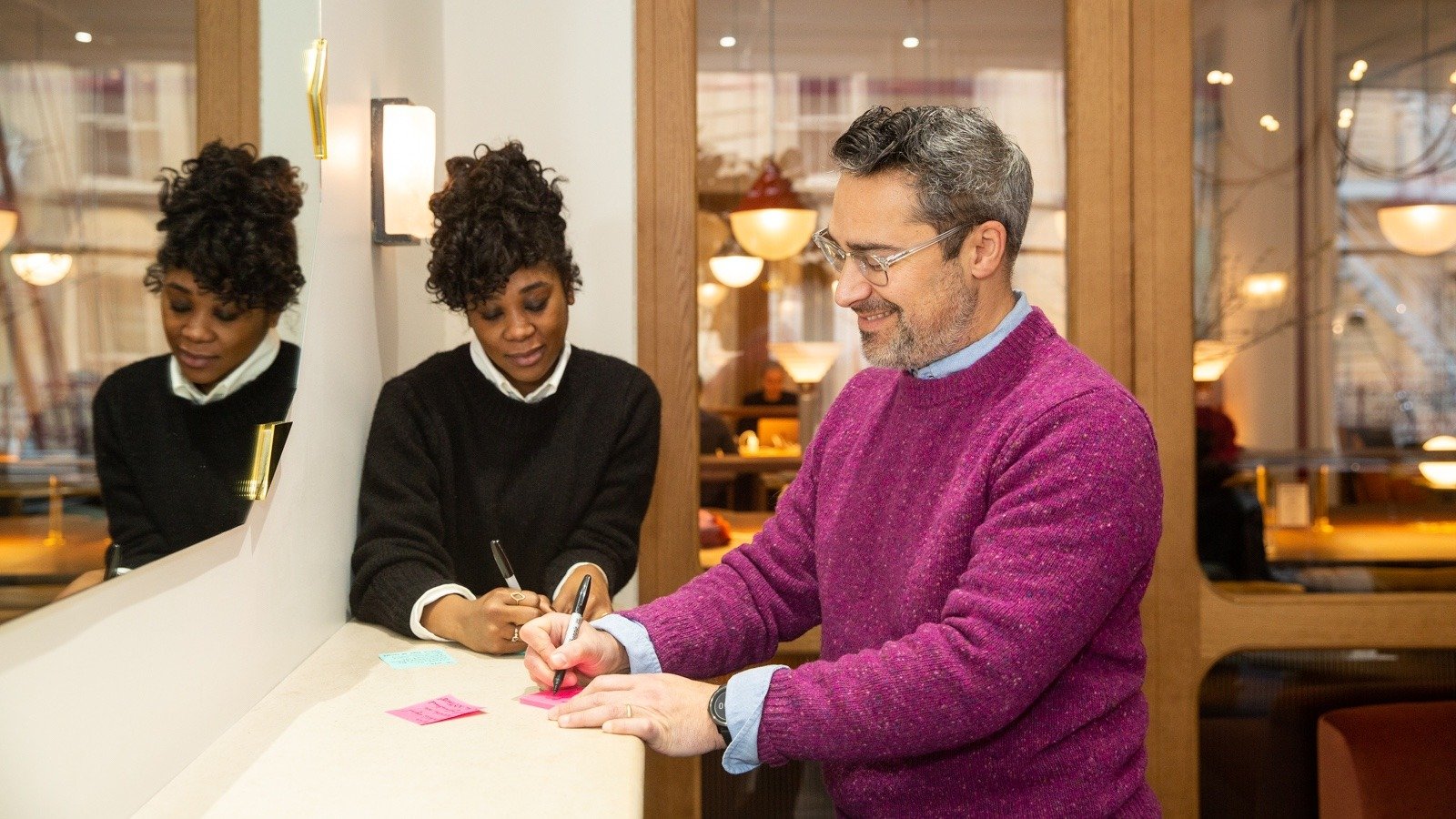Published February 24, 2023 | Updated August 17, 2024 | 11 minute read
A great team builder can define the tone of a meeting, a workshop, a leadership offsite, or an entire project.
These activities may seem silly – especially if they include silliness, which many of the best ones do. But a well-structured team building activity can be a powerful strategy/approach for building psychological safety, and thus maximizing the collaborative power of your team.
Psychological safety, as we know from a growing body of research helmed by August advisor Amy Edmondson, is critical for innovative teams – and the urgency is growing. As companies increasingly rely on project based work, leaders need a variety of tools for building psychological safety in new teams rapidly and effectively.
Team building activities are not only fun, they also create the environment for leaders to fulfill Edmondson’s three leadership behaviors for building psychological safety:
-
Learning frame: Team activities help individuals find their footing within uncertainty and failure.
-
Invite participation: Team activities create structures of engagement and interaction in which everyone can safely take part.
-
Respond productively: Team members get an opportunity to share authentically, acknowledge each other’s points of view, and express appreciation.
In this blog I’ll share five of my favorite team building activities for creating psychological safety. These are great for offsites, leadership development, project team orientation, and team workshops. I hope you can use and adapt these as you start building your own list of favorite team builders!
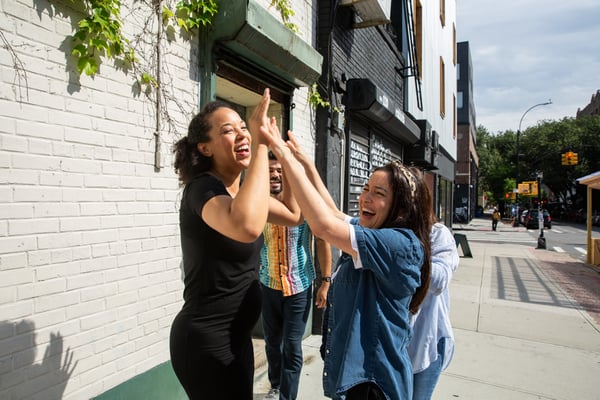
Team Building Activity #1: Create an Inclusive Company Culture
A check-in round is a great practice for building psychological safety in small steps over time. It can help create an inclusive space for all team members by creating equity in both sharing and listening. (For more on the relationship of psychological safety to equity and inclusion, check out our recent whitepaper on the subject!)
To facilitate a Check-In Round:
Start by explaining that in a Round, we create space to hear from each participant without interruption. This helps to ensure we honor all voices, and helps us connect and learn more about each other before we begin our work together.
Have each person share for 60 seconds or less. You can use a simple prompt, such as: Name, role, favorite childhood food.
In later check-ins you can vary the prompt in almost infinite ways; my pal Levi Baer wrote a great blog with 7 of his favorite check-ins, if you're looking for ideas. It’s good to show the prompt on a slide, for the visual processors in the group.
Model sharing a response, and then send the Round around the group, e.g. “We’ll start with Amara and move to the left.” If folks go over time, gently remind them that we need to stay within our time constraints in order to be able to hear from everyone.
Team Building Activity #2: Cultivate a Learning Mindset
A great team builder makes room for mistakes and stumbles, and creates a learning (and laughing) opportunity around those moments. This helps build trust within the team, by emphasizing learning over achieving, and framing failure as an accepted and integral element of the team experience.
One of my favorite team building games for embracing failure is called Categories.
To facilitate Categories:
Have everyone stand in a big circle, with you (the facilitator) IN the circle as a playing member.
Start by calling another player by their name, at the same time pointing and looking at them. They then do the same to another player, and names run around the circle, with everyone having their name called once, until the last person sends it back to you. (Have people keep their pointed hand raised so you can see who has already been called on.)
Once an order has been established, get the group to go through the same order a few times, encouraging them to go faster each time.
Next up, do the same with the letters of the alphabet. (Or fruit, or cereal, or items beginning with the letter B - you can mix up your categories however you like.) You as the facilitator give an “A” to a participant (different from the previous round) while making a 'giving' gesture towards them. Your neighbor continues by passing a “B” to another participant, and so on to create a new order. Again, once established, get the group to do it a few times.
Repeat this process with one more category, paired with a new gesture. Sports, colors, cities, months of the year - you get the idea.
As the group is coming to the end of doing their third category a second time, send in the first category again (names) back into the circle - you’ll likely have to shout over people.
You should now have TWO categories making their way through the circle. Once they get the hang of two categories, send out the third again.
Things will get noisy and hilarious. Have fun with it, but try not to get distracted so you can keep track if a category disappears in the chaos. If that happens, just send it back into the circle again. It doesn't matter who “dropped” the category, just send it straight back in.
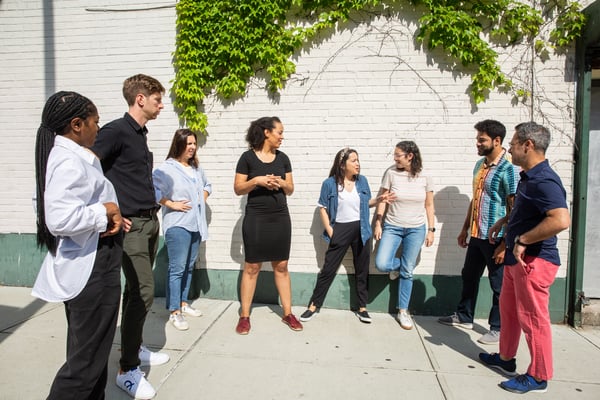
Debrief:
After a few minutes of playing all three categories, close the game and ask everyone what they noticed. A few prompts you might use to lead the discussion:
-
What did you notice about this group’s processing power?
-
Imagine if you focused on the reason something got lost. Would that be helpful?
-
How did my role as leader/facilitator function within the group?
-
How did you manage your focus during the game? What learning can you draw from that?
-
Would adding more people have helped?
-
How many categories could we do?
-
What are some signals that it’s breaking down?
Team building Activity #3: Unify Team Energy
Team building activities don’t have to be complicated. A simple warm-up game can build psychological safety by creating joy, synchronizing the team’s energy, and activating everyone’s capacity for listening.
I love Whoosh when I need a short, fun activity to unite a team’s energy for the work to be done.
To facilitate Whoosh:
Have the entire group stand in a circle and tell them we will be moving energy around the room.
Start with a clap that moves person to person – you clap to your left or right, the person captures the signal by clapping in sync with you, and then turns and passes it to their neighbor, on around the circle.
Once the group gets comfortable, add complexity with a double clap - this changes the direction of the flow. Add additional claps so that there are 2-3 flows happening at the same time.
Finally, once the game is clicking along, teach a Whoosh as a way to send the flow across the circle. Make a “Whoosh!” sound and point your hands at someone across the circle, making eye contact with them. They catch the flow and then send it along with a clap or another Whoosh.
Debrief:
Ask the group: As we sought to work in flow, what helped? Where did you get stuck? How might this game, and sharing energy and flow, relate to our work together today?
Team Building Activity #4: Embrace Diverse Communication Styles
Psychological safety is about helping each team member feel safe showing up in an authentic way. While most team cultures default towards extroversion and verbal expression, when you create space for people who are more introverted, visual, tactile, and/or writerly feel safe to operate in their optimal communication styles, you create greater psychological safety for everyone.
A Spectrums warm-up makes space for all communication styles and social energies. In this activity, people respond physically to a prompt (rather than verbally), creating a visual representation of the team’s composition and preferences.
To facilitate Spectrums:
If you’re in a room all together, you can have people stand or sit based on their response to the prompt, or for more physical engagement you can have them line up on an invisible line on the floor. If you’re meeting remotely, you can use camera on/off or raise hands.
A few sample prompts to get you started:
-
I prefer tea (stand) or coffee (sit)
-
I’m feeling energized (stand) or tired (sit)
-
I’m feeling brain-full (stand) or curious (sit)
-
Today I want more connection (stand) or reflection (sit)
-
I prefer to process internally (stand) externally (sit)
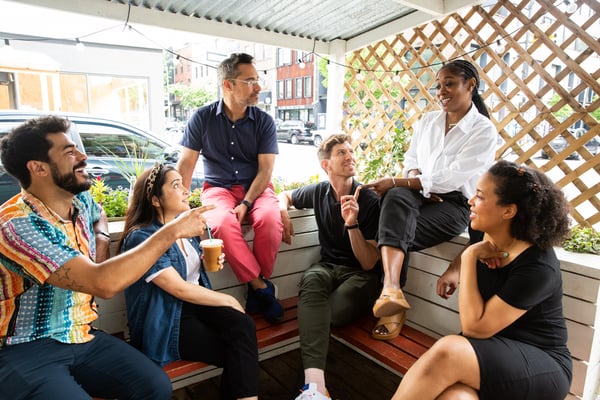
You can design almost infinite variations on the prompt, from casual and light to deep and thought-provoking. It’s best to design your prompts on a binary, even if it’s a false one; after all, connection and reflection don’t have to be opposites in real life. But for the purposes of this exercise it can be fruitful to frame them as such.
After each prompt you can invite a few people to share the reasoning behind their response, or you can simply let their stances speak for themselves.
Team Building Activity #5: Make New Ideas Accessible
A purpose-driven team building activity can help your team engage with the mindsets and ways of working approaches that they’ll need for the work ahead, while building psychological safety for team members to learn new mindsets.
For example, I use Build a House to help shift mindsets around agile ways of working, as a warmup for my agile workshops.
Feel free to use this to help your own agile teams, or as inspiration to design your own purpose-driven activity.
To facilitate Build a House:
Break the group into teams of 5-7 people. Each team is assigned a table containing notecards, scissors, tape and sticky notes.
The exercise is played in two rounds. For Round 1, assign all groups to Perfect Homes Corp. Ask each group to select a CEO, who draws a simple house blueprint. Think 4 walls, roof, door, windows, maybe a chimney. The group should also identify their Line Manager (whoever has the next birthday).
Share the following description of the Perfect Homes Corp company culture:
- We never make mistakes.
- We’re obsessed with quality.
- With each other, we’re direct – no questions.
- We respect authority; the line manager is in charge and assigns roles.
Set a timer for 5 minutes, and task the groups to design and build to spec as many homes as possible using only the supplies at their table.

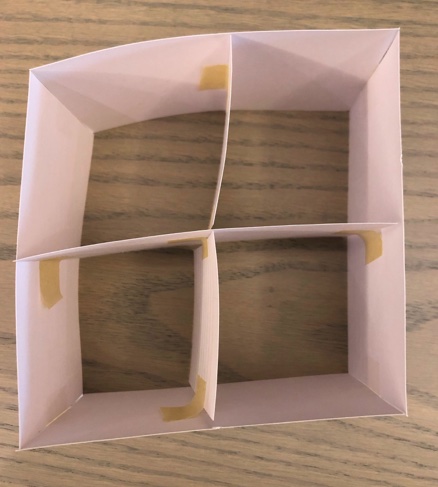


For Round 2, all groups transition to Appreciative Homes Corp. Each group selects a Customer, who is invited to customize the blueprint to their wishes. Keep it simple - perhaps cut an element, or add an element.
Now share the following description of the Appreciative Homes Corp company culture:
- The quality of our product comes from how we work together.
- We’re obsessed with our customer.
- We communicate by asking questions and sharing ideas.
- We all have autonomy.
Set a timer for 5 minutes, and task the groups to design and build as many homes as possible that their customer loves, using anything they can find in the room to support the designs.
What to expect:
In Round 1, the teams generally struggle to get houses made to spec. People will be sitting around waiting, while the Line Manager directs the work.
In Round 2, the houses will generally be more creative and differentiated. Some groups will start to ask the Customer questions. This is permissible, and even good!
Debrief:
After Round 2 is finished, lead a debrief discussion with a few prompts:
-
How did you work together differently in the two rounds?
-
What were the benefits and drawbacks of each?
-
When is each way of working fit for our goals?
From there, you can transition into a conversation about the agile behaviors exhibited during the exercise, including discussions about when hierarchy is or isn’t helpful; how autonomy can lead to greater creativity and diversity of ideas; and how delighting the customer can be easier than getting something perfect.
This activity presents opportunities for rich dialogue around company culture, and a chance for people to work in a physical medium which can help activate their creativity in a different way.
Summary: Building Psychological Safety Can Be Fun!
Psychological safety is so critical for business success, talent retention and equity & inclusion that it can be easy to forget that it also makes work more fun.
Not only are the activities themselves a nice shake-up from the day to day routine, but they also help dissolve unspoken barriers of self-protection and create new spaces of exploration and connection. This translates to a more enjoyable and engaging team experience, in which team members are supported in making their best, most authentic contributions.
The five team building activities I’ve shared in this blog are just a starting point. I encourage you to start your own list of go-to team builders. As you practice and learn, you might even try inventing or adapting one of your own!

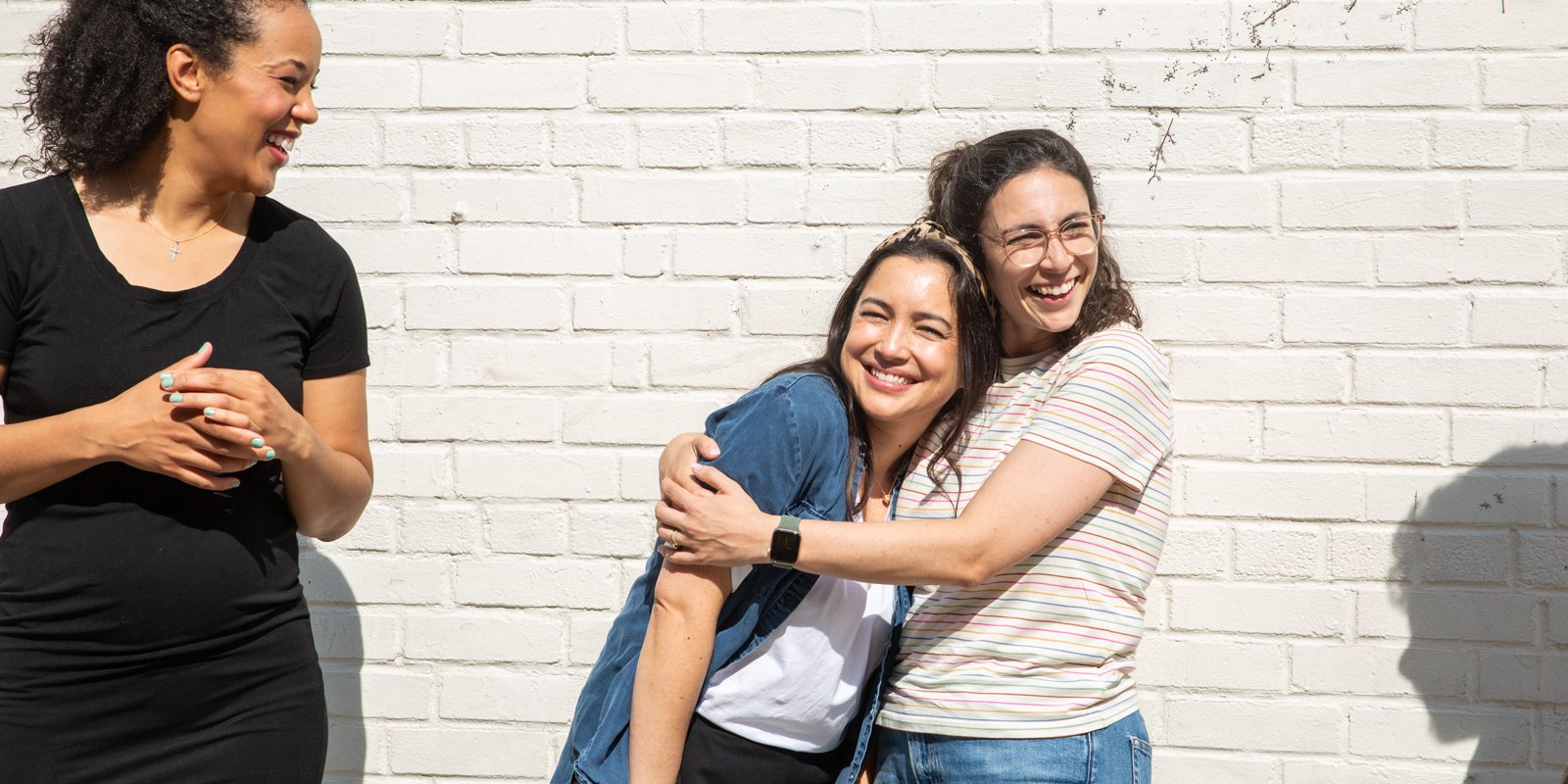
.jpg)





